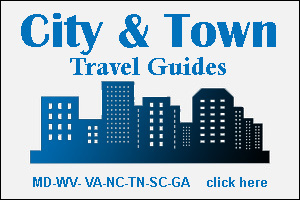Hancock Maryland
“A Trail Town Community”
Town of Hancock MD
Hancock, Maryland is nestled at the foothills of the Appalachian Mountains of Western Maryland along the banks of the Potomac River, and border Pennsylvania and West Virginia. Hancock is a unique town in the Western Maryland mountains with views of the entire area. Hancock is only a short drive from Morgantown, Pittsburgh, and the DC-Baltimore Metropolitan Areas. Hancock Maryland is part of the distinction that U.S. Route 40 has been given as the “All-American Road.”
Hancock, Maryland has something for everyone, whether your interests are shopping, outdoor recreation or relaxation, Hancock Maryland is also home to a huge indoor antique store and flea market and have renowned family owned restaurants that have been in business for decades. Hancock, Maryland is situated along the historic Chesapeake & Ohio Canal National Historical Park where bikers and hikers are welcome every day of the year. Bicyclists, skaters, walkers, joggers, and natures lovers utilize the C&O Canal towpath and the Western Maryland Rail Trail, for bicycling with level black top pavement stretching for 21 miles that is fun and safe for children, adults, and seniors. Camping, horseback riding, and boating also lend to Hancock’s reputation for year round outdoor recreational experiences.
History of Hancock MD
Hancock Maryland is one of the oldest settlements in Western Maryland. The town got its name from Edward Hancock Jr. whose family was instrumental operating the ferry at the northernmost point of the Potomac River. Edward Hancock also fought alongside George Washington in the American Revolution.
Hancock was an outpost on the frontier, the area known as “Tonoloway Settlement” was subject to the ravages of Indian raids. Maryland Provincial Governor Horatio Sharpe ordered a series of forts to be built along the Potomac. In 1755, Lt. Thomas Stoddert, was sent out to build a stockade fort in the “Tonoloways” (now Hancock).
As the National Pike (National Road) was extended westward in 1818, the town boomed as stagecoach inns, liveries, and blacksmith shops dotted the Main Street. The Barton House, had such notables as Andrew Jackson, Henry Clay and Davy Crockett.
The next growth spurt for Hancock came with the construction of the Chesapeake and Ohio Canal, which ran from Georgetown in Washington D.C. to Cumberland, MD, a total of 184.5 miles. It reached Hancock by 1839. With the completion of the canal Hancock boasted two business districts, one on Main Street (or Baltimore Street) and the other on Water Street.
After the Civil War in 1886, E.P. Cohill began planting orchards on the hills surrounding Hancock. As thousands of acres were cultivated, Hancock became a “fruit basket for the nation” and flourished well into the 1970’s.
Hancock was home to “The Hunting Club of the Presidents”, called Woodmont Hunting Club. Situated on a high hill along the Potomac west of town it is now the property of the Maryland State Dept. of Natural Resources and is open to the public once a year.
Highlights of Hancock Maryland
- Bowles House
- C & O Canal
- Rails & Trails
- Museum & Visitors Center
- Tonoloway Baptist Church
- Hancock Tollhouse
- Historical Society Museum in Town Hall
- Fort Frederick
- Woodmont Rod & Gun Club
- Sideling Hill Cut
- St Thomas Episcopal Church
- Hancock Antique Mall
- Widmeyer Park / Veterans War Memorial

